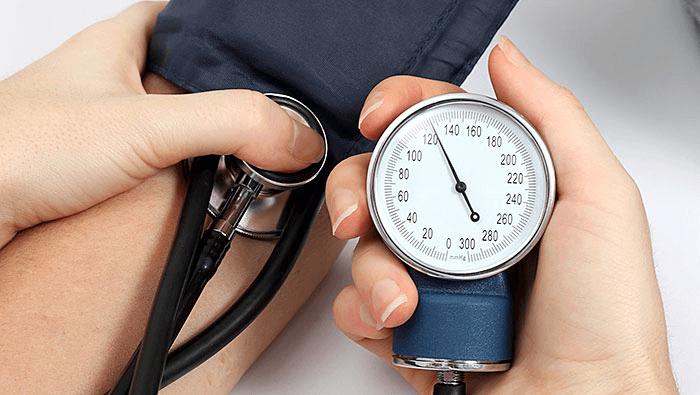Courtesy of The Washington Post
I was curious about which numbers my fellow dietitians consider the most important. I sought feedback from 20 experts who work in either hospitals or private practice. Here are the data that have the most clinical importance, and the ones they tell their patients to ignore.
The numbers that matter most:
Half your plate. Instead of counting every calorie, dietitians recommend that clients simplify food decisions by using a plate model, where you choose the right proportions of each food. That means filling half your plate with vegetables and some fruit; one quarter with protein-rich foods such as fish, poultry or beans; and the final quarter with whole grains such as quinoa or brown rice. The Healthy Eating Plate from Harvard University is a great example of a plate model.
25 to 35 grams. That’s how much fiber a day we need for optimal health, but most Americans get just 16 grams per day. Getting enough fiber helps lower cholesterol and blood sugar levels, prevents certain cancers, eases constipation and keeps you feeling full for longer, which is helpful for weight management. Get more fiber from vegetables, fruit, beans, nuts, seeds and whole grains (or just follow the healthy-plate model, mentioned above).
7 to 8 hours. Are you getting that much sleep every night? Lack of sleep has short-term consequences, such as poor judgment, increased risk of accidents, bad moods and less ability to retain information. Poor sleep over the long term has been linked to an increased risk of obesity, Type 2 diabetes and heart disease. So, turn off the TV, power down your devices and get the rest your body needs.
150 minutes. That’s the recommendation for how much physical activity (equivalent to 2.5 hours) you should get each week, preferably spread through the week in increments of at least 10 minutes. This level of activity helps combat heart disease, stroke, Type 2 diabetes, obesity, dementia and cancer.
100 mg/dl. Your doctor can test your fasting plasma glucose level to check for Type 2 diabetes (a normal reading is less than 100 mg/dl). Often called a “lifestyle” disease, Type 2 diabetes is largely preventable by eating well and getting enough exercise. If you have diabetes, lifestyle changes can actually help you reverse the diagnosis — but first you need to know your number. A diagnosis of pre-diabetes is 100 to 125 mg/dl, and a diagnosis of diabetes is 126 mg/dl or higher.
120/80 mmHg. High blood pressure is known as the silent killer because it often has no obvious symptoms. Left untreated, high blood pressure is a risk factor for having a heart attack or a stroke. That’s why you need to get your blood pressure checked and know whether you are at risk. Normal blood pressure is 120/80 mmHg (millimeters of mercury) or less. Elevated blood pressure is 121 to 129 over 80. High blood pressure is 130 to 139 over 80 to 89.
The numbers that don’t matter very much:
Size 8: Too many people have a diet goal to be a specific size, but the numbers on clothes are inconsistent and arbitrary. A size 4 at one store may fit like a size 8 at a different store, which makes shopping frustrating — and makes your pant or shirt size a very poor measure of your health. If you don’t like the number on your pants, cut the label out. Focus on how you feel, not the number on the clothing tag.
50 years old. Or 86. Or 31, 75 or 27. Age is just a number. You are never too young to need to take care of yourself, or too old to start an exercise program or change what you eat. A healthy lifestyle is important at every age.
1,800 calories. Or whatever number you choose. You don’t need to count every calorie you eat — it’s tedious, often flawed, and it doesn’t help you choose nutrient-dense foods. If you had the choice between 100 calories of broccoli or fries, you’d probably choose the fries, right? But that wouldn’t provide much nourishment and oversimplifies eating into one silly number. If you are a lifelong calorie counter, there’s no need to give it up, but remember that it’s not the most vital number for your overall health.
40-30-30. Or any other ratio of macronutrients, the umbrella term for carbs, protein and fat. Keeping track of macros is a popular diet, and if it works for you, fantastic! But some dietitians warn that it’s difficult to know the precise macro content of every food you eat, which leads to obsessive use of food diaries and macro-counting apps. This promotes a dieting mentality, rather the concept of enjoying food from a balanced plate. There’s nothing magical about counting macros. It’s just a diet.
Below 25. The body mass index (BMI) is a clinical tool that groups people in categories of normal weight, overweight or obese depending on their height and weight. But BMI doesn’t take age, gender or bone structure into account, and athletes are often classified as overweight because BMI doesn’t distinguish between muscle and fat! So, don’t rely on this number as your primary measure of health. Read More

